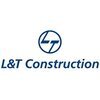Filter interviews by
Tube Investments of India Diploma Engineer Trainee - DET Interview Questions and Answers
Tube Investments of India Diploma Engineer Trainee - DET Interview Experiences
1 interview found
I appeared for an interview in Nov 2016.
Interview Questionnaire
1 Question
- Q1. What was your favourite subjects in diploma.
- Ans.
My favorite subjects in diploma were Electrical Engineering and Computer Programming.
I enjoyed learning about circuit analysis and design in Electrical Engineering.
I found Computer Programming fascinating as I learned to write code and develop software applications.
Both subjects allowed me to apply theoretical knowledge to practical projects.
Interview Preparation Tips
Experience: It was reasoning and IQ questions.
Round: Resume Shortlist
Experience: It was about introducing and family backgrounds.
Round: Technical + HR Interview
Experience: My favourite subjects are
THEORY OF MACHINE,
MACHINE TOOLS TECHNOLOGY AND MAINTINANCE, AND MACHINE ENGINEERING DRAWING.
Skills: Reasoning Power And Aptitude
College Name: Radha Govind Polytechnic College, Moredabad. UP.
Top trending discussions






Interview questions from similar companies

I applied via Naukri.com and was interviewed before Sep 2020. There was 1 interview round.
Interview Questionnaire
3 Questions
- Q1. About pipeline
- Q2. Hydrotest procedure
- Ans.
Hydrotest procedure is a process of testing the strength and integrity of a pressure vessel or pipeline by filling it with water and pressurizing it.
The vessel or pipeline is filled with water and pressurized to a specified level
The pressure is held for a specified amount of time to check for leaks or deformations
The test is usually performed before commissioning or after repairs
The test pressure and duration are deter...
- Q3. HDD procedure
- Ans.
HDD procedure refers to the process of installing and configuring a hard disk drive in a computer system.
Ensure the HDD is compatible with the computer system
Physically install the HDD in the appropriate bay
Connect the necessary cables to the HDD and motherboard
Configure the HDD in the BIOS settings
Format the HDD and install the operating system
Test the HDD for proper functionality
Interview Preparation Tips
Skills evaluated in this interview


(3 Questions)
- Q1. Elaborate VT pump installation process step by step.. How many valves & types used in Raising main? Explain about Cooling Lubrication system.
- Ans.
The VT pump installation process involves several steps. The raising main has multiple valves of different types. The cooling lubrication system is also important.
The VT pump installation process involves selecting the right location for the pump, preparing the foundation, and installing the pump.
The raising main typically has gate valves, check valves, and air release valves.
The cooling lubrication system is responsib...
- Q2. Why are you going to quit the current job?
- Ans.
I am looking for new challenges and opportunities for growth.
Seeking new challenges and opportunities for growth
Wanting to expand my skill set and knowledge
Desire for a higher level of responsibility
Seeking a better work-life balance
Unsatisfied with the current work environment or company culture
- Q3. What is your salary expectation?
- Ans.
I expect a competitive salary that reflects my experience and the responsibilities of the Assistant Manager role.
I am looking for a salary that is in line with industry standards and the level of responsibility associated with the Assistant Manager position.
I have researched the average salary range for Assistant Managers in this industry and location, and I believe my skills and experience warrant a salary within that...
Interview Preparation Tips
Be Genuine..
Listen each & every Qustion or case study & Explain properly as per practical conditions.

I applied via Naukri.com and was interviewed before Jun 2023. There were 2 interview rounds.
(1 Question)
- Q1. Reagarding work experiences & background.
(4 Questions)
- Q1. Related to technical aspects of projects executed.
- Q2. Concrete mix designs
- Q3. P&M productivity - Earth works
- Q4. Customer relationship related
Interview Preparation Tips

I applied via Walk-in and was interviewed before Jan 2023. There was 1 interview round.
(9 Questions)
- Q1. Stairs case ralling Section and fixing process
- Q2. Productivity of plaster work and tiles
- Ans.
The productivity of plaster work and tiles is an important factor in construction projects.
Productivity in plaster work can be measured by the amount of plaster applied per hour or per day.
Factors that can affect plaster work productivity include the skill level of the workers, the quality of materials used, and the efficiency of the tools and equipment.
For example, experienced plasterers may be able to apply plaster m...
- Q3. Centiler beam steel design
- Ans.
Centiler beam steel design is a method used to determine the appropriate size and shape of steel beams for structural support.
Centiler beam steel design involves calculating the load and span of the beam to determine the required section modulus.
The section modulus is then used to select the appropriate beam size from standard steel beam tables.
Factors such as the type of load, material properties, and safety factors a...
- Q4. In footing 25 mm dia bend deduction yes ya No
- Q5. Responsibility and team' work
- Q6. Your work at site?
- Q7. Work permit at site
- Q8. Density of steel with unit
- Ans.
The density of steel is a measure of its mass per unit volume.
Density of steel is typically measured in units of grams per cubic centimeter (g/cm³) or kilograms per cubic meter (kg/m³).
The density of steel can vary depending on the specific type and composition of the steel.
For example, the density of carbon steel is around 7.85 g/cm³, while stainless steel has a density of about 8 g/cm³.
The density of steel is an impo...
- Q9. AAC block price and size details
- Ans.
AAC blocks are a type of lightweight concrete blocks used in construction. They come in various sizes and prices.
AAC blocks are made from autoclaved aerated concrete, which is a mixture of cement, lime, sand, water, and an expanding agent.
The size of AAC blocks can vary, but common sizes include 600mm x 200mm x 100mm and 600mm x 200mm x 150mm.
The prices of AAC blocks depend on factors such as the brand, quality, and qu...
Interview Preparation Tips
- Nice

I appeared for an interview before Mar 2024, where I was asked the following questions.
- Q1. Explain about construction activities
- Ans.
Construction activities encompass planning, designing, and building structures, ensuring safety and compliance with regulations.
Site Preparation: Clearing and leveling land before construction begins.
Foundation Work: Pouring concrete and laying the groundwork for stability.
Framing: Constructing the skeleton of the building using wood or steel.
Roofing: Installing the roof structure to protect the building from elements.
...
- Q2. Explain procedure of Mivan Shuttering
- Ans.
Mivan shuttering is an aluminum formwork system used for rapid construction of concrete structures.
1. Preparation: Site is cleared and foundation is laid before shuttering installation.
2. Assembly: Aluminum panels are assembled on-site to create the desired shape of walls and slabs.
3. Alignment: Panels are aligned and secured to ensure accuracy in dimensions.
4. Concrete Pouring: Concrete is poured into the formwork, fi...

I appeared for an interview in Dec 2024.
(1 Question)
- Q1. Lattice tower Sub bracing design
- Ans.
Lattice tower sub bracing design involves the structural support system for the tower.
Sub bracing design is crucial for maintaining the stability and strength of lattice towers.
The design should consider factors such as wind load, weight distribution, and material strength.
Examples of sub bracing design elements include diagonal bracing, horizontal bracing, and cross bracing.
Computer-aided design software is often used...

I applied via Recruitment Consulltant and was interviewed in Dec 2021. There were 3 interview rounds.

(4 Questions)
- Q1. Aluminium formwork slab cycle, components, sqm work for per carpenters
- Q2. How much sqm plastering done by Mason per day, concrete blocks sizes, workability, painting, gypsum work
- Q3. Conventional shuttering, BBS, steel weight per metre, field test for steel
- Q4. Field concrete tests, cement, grade of concrete
(1 Question)
- Q1. Reason for job change, why should we hire you
Interview Preparation Tips

I applied via Walk-in and was interviewed before Jan 2022. There were 3 interview rounds.

(3 Questions)
- Q1. Related to field and years of experience
- Q2. Salary,expectations,company requirements and commitment to work
- Q3. They test your patience and response capability
(2 Questions)
- Q1. Cable laying and jointing knowledge
- Q2. Related to field inspection and site acceptance
Interview Preparation Tips

I applied via Recruitment Consulltant and was interviewed before Mar 2022. There were 2 interview rounds.

(3 Questions)
- Q1. Your previous experience
- Q2. Describe about yourself
- Q3. Asked about my management skills
Interview Preparation Tips
Tell us how to improve this page.
Tube Investments of India Interviews By Designations
- Tube Investments of India Assistant Manager Interview Questions
- Tube Investments of India Quality Engineer Interview Questions
- Tube Investments of India Customer Service Manager Interview Questions
- Tube Investments of India Management Trainee Interview Questions
- Tube Investments of India Senior Engineer Interview Questions
- Tube Investments of India Project Engineer Interview Questions
- Tube Investments of India Team Leader (Technical) Interview Questions
- Tube Investments of India Sales Executive/Officer Interview Questions
- Show more
Interview Questions for Popular Designations
- Diploma Trainee Engineer Interview Questions
- Diploma Mechanical Engineer Interview Questions
- Diploma Electrical Engineer Interview Questions
- Diploma Civil Engineer Interview Questions
- Diploma Apprentice Trainee Interview Questions
- Diploma Electronics Engineer Interview Questions
- Diploma Chemical Engineer Interview Questions
- Diploma Automobile Engineer Interview Questions
- Show more
Interview Questions from Similar Companies
Fast track your campus placements
|
Assistant Manager
137
salaries
| ₹3.5 L/yr - ₹13.4 L/yr |
|
Senior Executive
127
salaries
| ₹4.3 L/yr - ₹9.5 L/yr |
|
Quality Inspector
80
salaries
| ₹1 L/yr - ₹3.5 L/yr |
|
Senior Engineer
77
salaries
| ₹2.5 L/yr - ₹7 L/yr |
|
Quality Engineer
74
salaries
| ₹1.4 L/yr - ₹4.9 L/yr |

L&T Construction

Simplex Infrastructures

ITD Cementation India

Ashoka Buildcon
- Home >
- Interviews >
- Tube Investments of India Interview Questions >
- Tube Investments of India Diploma Engineer Trainee - DET Interview Questions














